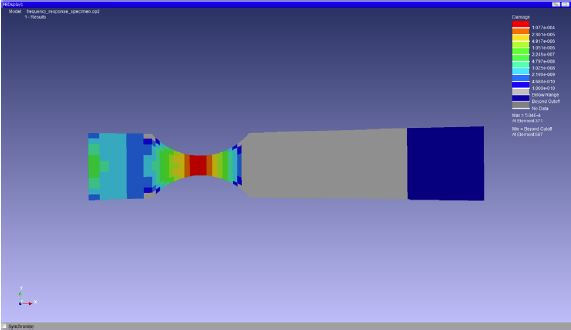The Role of Vibration in Fatigue
Latest News
October 23, 2014
 Dear Desktop Engineering Reader:
Dear Desktop Engineering Reader:
Two score and eight years ago this month, the Beach Boys brought forth what is considered by people who consider these things one of the top ten songs of all time: “Good Vibrations.” Wikipedia tells us that inspiration for this tune was that one of the composers was told that dogs bark at people who give off bad vibes. Alas, for engineers, a dog, even a full-sized Lab, is probably not the most accurate technology for predicting the effects of vibrations on a part’s or an assembly’s durability and fatigue qualities.
All, however, is not lost. HBM-nCode has been in the business of helping engineers predict fatigue and durability since 1982. Today’s Check it Out link takes you to an opportunity to learn about the role vibration plays in fatigue and durability and what you can do to ensure that you’re always pickin’ up good vibrations to analyze.
The opportunity comes in the form of a complimentary one-day seminar called “The Role of Vibration in Fatigue.” The seminar’s underlying idea is that objects with mass vibrate. All sorts of sources can intensify vibration, say engines running, wave loading, wind and aerodynamic loading or rotating machinery. Vibration, in turn, creates stress cycles that can lead to product failure over time. To avoid failure you need to recognize that vibration and fatigue are linked phenomena and should be understood and managed together.
The seminar provides a technical introduction to vibration’s role in fatigue and durability. And let me tell you right here: This is not a seminar on the mathematical equations for theoretical physicists. Rather, it’s for hands-on engineers. The focus will be on practical engineering considerations for designing against vibration and fatigue. HBM-nCode says that it’s helpful if you have prior knowledge of material behavior and general structural mechanics, but not required.
The presentation begins with an overview of the basic principles of fatigue and durability as well as an introduction to vibration and how vibration affects durability. From there, you’ll see how to create equivalent shaker profiles for laboratory durability tests and how you can run virtual shaker table tests using FEA (finite element analysis) results from tools like ANSYS, Nastran, Abaqus and RADIOSS. Vibration and fatigue analyses will be applied to both measured data and simulation results from FEA.
At the seminar, you’ll learn how you can use, or use better if you’re already a user, nCode software for vibration and durability analysis. This includes a look at nCode GlyphWorks, which offers specialized options for fatigue analysis and frequency domain tools tuned for ride quality and rotating machinery analysis. It will also show you the widely deployed fatigue analysis tool, nCode DesignLife, for fatigue life prediction from FEA results. nCode DesignLife offers a broad set of analysis capabilities that include different methods for fatigue life prediction including stress-life, strain-life, multi-axial, weld analysis and virtual shaker table testing. Together, these two graphical toolsets create one environment for test and fatigue analysis.
“The Role of Vibration in Fatigue” seminar will be held at various locations throughout the U.S., Canada and France during November and December. Space is limited, so check to see if you can make it to one near you right away. This sounds like an intriguing and rewarding day.
As an aside: While researching this Check it Out, I took in an on-demand webinar called “Vibration Fatigue in nCode DesignLife” as well as a couple of customer application videos, including “Using GlyphWorks to Create a Composite Random Vibration Profile from Field Acceleration Data” and “Using nCode to Perform Vibration Fatigue Analysis of a Cooling Fan Mount.” I also downloaded a white paper by Dr. Andrew Halfpenny of HBM-nCode called “A Frequency Domain Approach for Fatigue Life Estimation from Finite Element Analysis.” They were very good, so take them in if you cannot make one of the live seminars.
Thanks, Pal. – Lockwood
Anthony J. Lockwood
Editor at Large, Desktop Engineering
Learn more about “The Role of Vibration in Fatigue” seminar series hosted by HBM-nCode.
Subscribe to our FREE magazine, FREE email newsletters or both!
Latest News
About the Author
Anthony J. Lockwood is Digital Engineering’s founding editor. He is now retired. Contact him via [email protected].
Follow DERelated Topics







